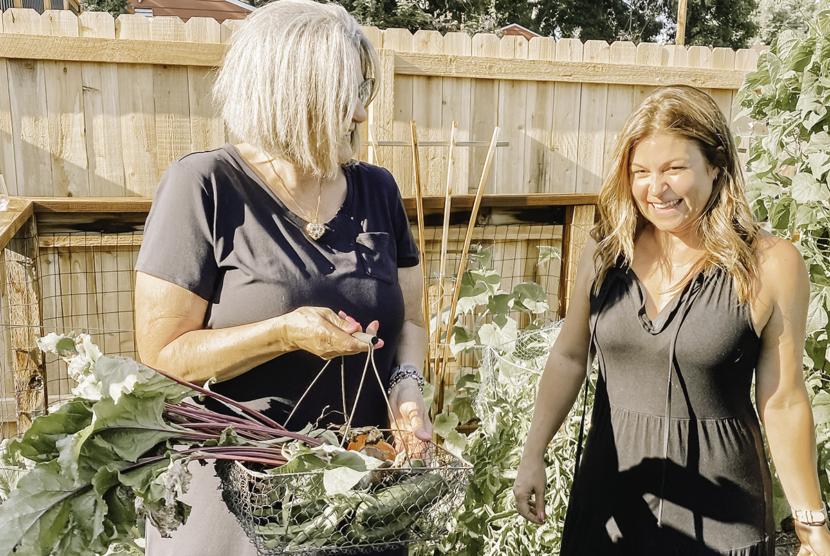If you’re just starting out growing food this summer, designing your vegetable garden is one of the first things you’ll want to consider. Choosing the right garden location and plant placement is critical to ensure a successful garden. You’ll want to be sure your garden gets enough sun, isn’t too tightly crowded yet also uses all the space available. Here is a guide to designing your vegetable garden:
1. Choose the Right Location when Designing Your Vegetable Garden
The first step to designing a successful vegetable garden is to choose the right location. Look for a spot with full sun exposure (at least 6 hours of direct sunlight per day). It’s even better if you can get longer amounts of sun throughout the day. Avoid areas that are shaded by trees or structures, as these can block the sun and hinder plant growth.
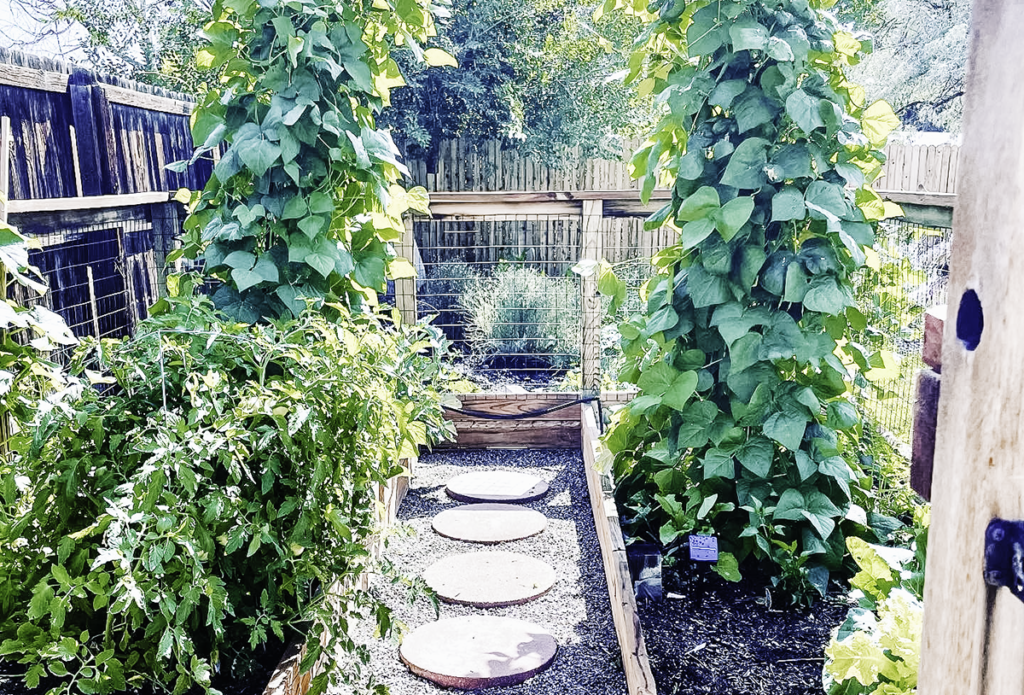
2. Decide on the Vegetable Garden Size
If possible, pick an area with good soil drainage and easy access to water. If you’re planning to run an irrigation line or automatic watering system, you’ll want to be sure you have an easy way to run this from the garden your main water source.
The size of your vegetable garden will depend on how much space you have available and how much produce you want to grow. This is where some research should begin because your vegetable garden size should depend on a few things:
Consider What Vegetables You Like to Eat
You should first think about what types of vegetables you’d like to be eating from your garden. If you love tomatoes, be sure to plan enough of them. If you think you “should” be eating a certain vegetable but don’t truly like eating it, don’t include it. I made the mistake my first year of gardening planting way too much kale. I like kale in very small amounts. But I didn’t need to plant an entire row of it.
Research How Much Fruit Each Vegetable Plant Produces
Once you have your vegetable types selected, the next step in designing your vegetable garden is researching how many vegetables each plant will produce. You should then be able to figure out how many plants are needed per person in one growing season. So do your research online to determine how many plants to include in your garden for your household.
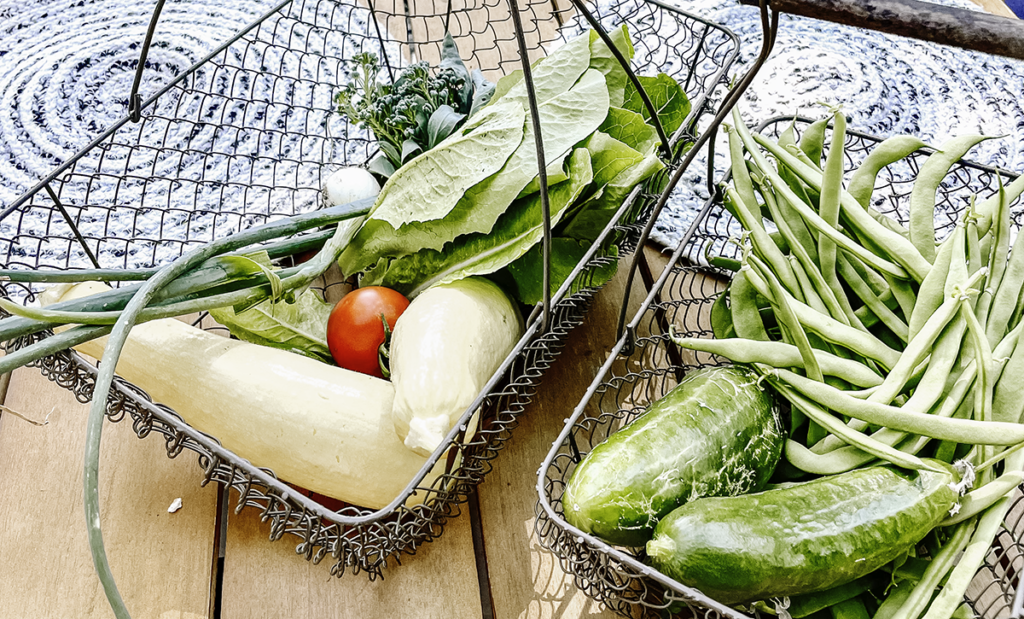
Determine How Much Time You Want to Put into Maintaining Your Garden
While growing a vegetable garden is great fun, it also requires some work and maintenance. There is time involved in keeping it watered if you plan to hand water your garden. I’d highly recommend automating watering even with the help of a basic a water timer.
There will also be work involved maintaining your vegetable garden and harvesting the food it yields. Once plants start producing, you can expect you’ll need to go out to pick vegetables every couple of days. Not only will you not want to waste the food your vegetable garden provides, but harvesting from the plant also stimulates it to keep producing longer into the season.
The amount of time it takes to harvest your garden also depends on the vegetable size. Cherry tomatoes take more time to pick than regular sized tomatoes. Green beans are time consuming because you’re picking many small vegetables instead of, for example, plucking one or two large red peppers.
A good rule of thumb is to start small and expand later as you become more experienced.
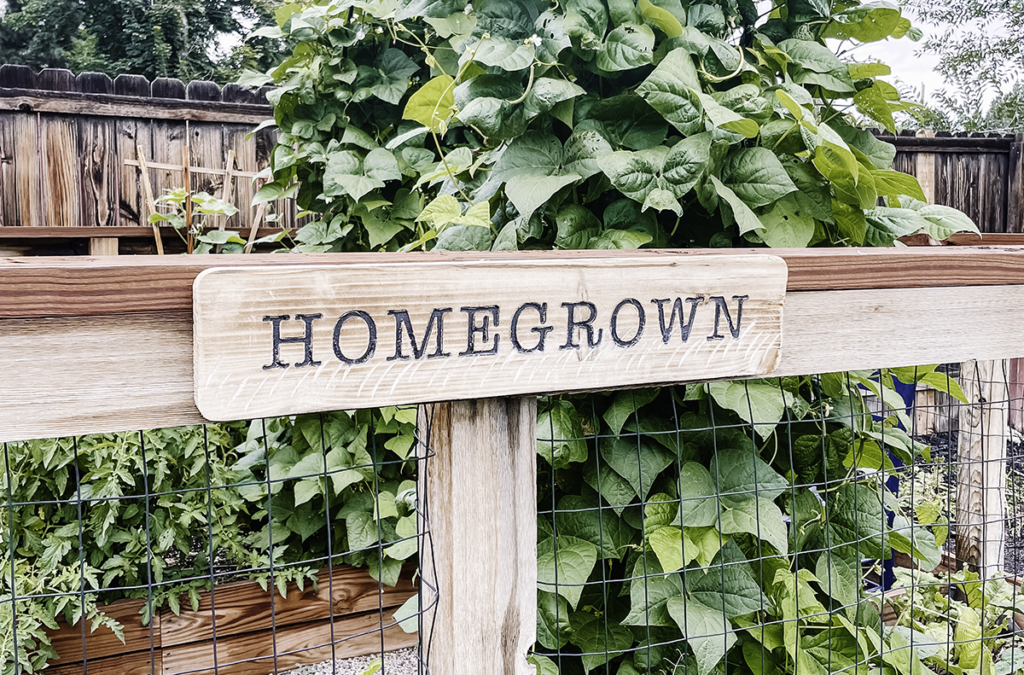
3. Plan the Layout
Once you have decided on the size of your garden, it’s time to plan the layout. Consider the following factors:
Plant Spacing:
Different vegetables require different spacing, so it’s essential to plan accordingly when designing your vegetable garden. Plants that require more space, like tomatoes or peppers, should be given enough room to grow without crowding. Plants that require less space, like lettuce or radishes, can be planted closer together.
If growing from seed, look on your seed packets for expected plant size. Plants bought from a garden center might have this information on the tag that comes with it. If not, research online how wide and tall each vegetable plant is expected to grow.
Measure your garden bed size and sketch out your vegetable garden design on graph paper. Draw everything to scale. One square on the graph paper might equal one foot of garden space. Draw circles to the relative expected size to represent individual vegetable plants. This might take one or two tries to get things spaced out correctly. But once you do, this will be a loose map of where to put everything once you get to planting!
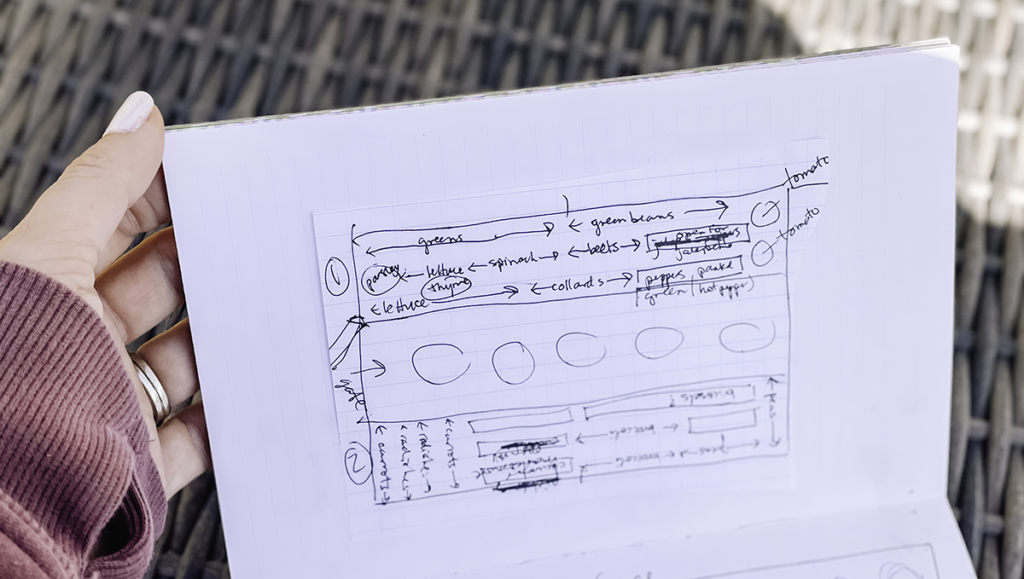
Companion Planting
Companion planting is one thing I have not experimented with much in my garden, but some gardeners are big supporters of it. Certain plants grow better together than others, while others should be kept apart. Companion planting can help deter pests, boost soil fertility, and increase yield. For example, tomatoes and basil make excellent companions, while tomatoes and corn should be kept apart.
I’d say that if this interests you, try placing a couple companion plantings together in your garden. But if this is something you’d rather not mess with, don’t stress over it! Starting a vegetable garden is oftentimes just about STARTING.
Crop Rotation
Rotating your vegetable plants can avoid soil depletion and pest problems. Plan your layout so that crops are rotated each year to a different section of the garden. However, this doesn’t have to be a complicated process for a new gardener. I don’t put a lot of time in tracking what needs to move to a new location each year. I generally just try plants in different locations each year not only as a way to make an attempt at crop rotation, but also to investigate if maybe a certain vegetable will do better in a different spot. Or, I may just like the look of something at one end of the garden versus the other. This is more just experimentation of what I prefer and not so much anything too scientific.
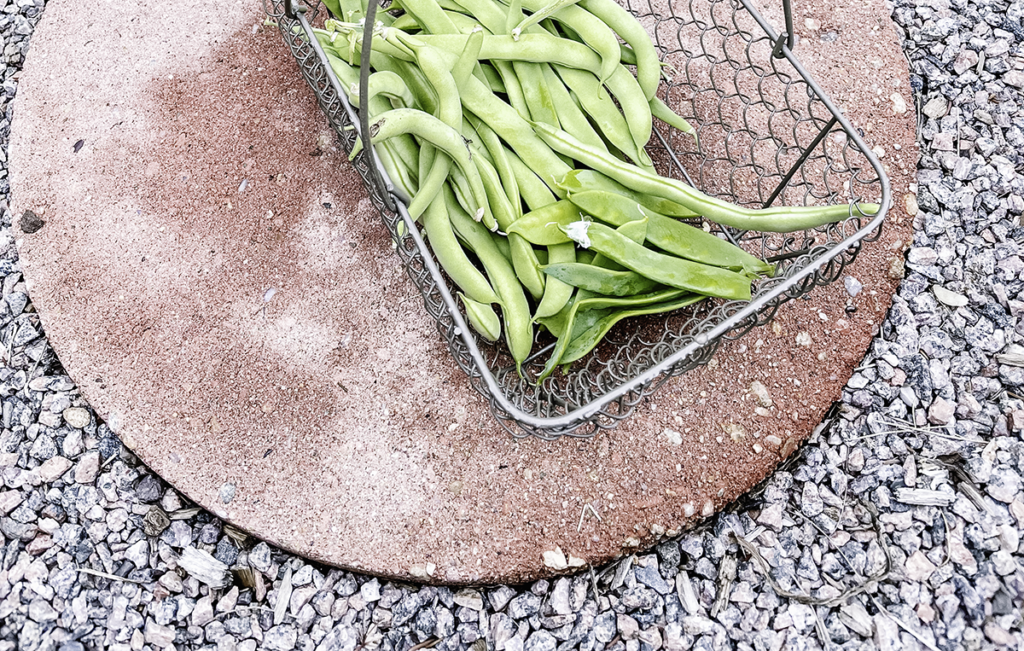
Paths and Access
Plan the layout when designing your vegetable garden to include paths and easy access to each area of the garden for easy maintenance. You’ll want simple space between rows to get in and around plants. I use pea gravel in the aisles of my raised beds and mulch between rows in other areas where I plant directly in ground.
4. Plant Placement in Your Vegetable Garden Design
When deciding where to place each plant, consider the following factors:
- Sunlight: Place plants that require full sun, such as tomatoes, cucumbers, and peppers, in the sunniest areas of the garden. Shade-loving plants, like lettuce and spinach, can be planted in areas that receive less direct sunlight.
- Soil Conditions: Different plants require different soil conditions. For example, potatoes prefer loose, well-drained soil, while spinach prefers soil with higher moisture content. Group plants with similar soil requirements together.
- Water Needs: Plants have different water requirements, so it’s essential to plan for proper watering. Plants that require more water, like cucumbers and squash, should be planted in areas with easy access to water.
- Height: Some plants, like pole beans and corn, can grow quite tall and may shade smaller plants. Place these plants on the north or west side of the garden to avoid shading other plants. Also consider planting vining plants near the side of a fence or install a trellis for these varieties to crawl up on vertically. Doing so will help create extra space in your vegetable garden.
5. Keep a Garden Journal to Track Progress
As your garden grows and develops, it’s important to keep track of its progress. Starting a garden journal can help you keep track of when you planted each vegetable, when it was harvested, and any issues or successes you had along the way. You can also use your journal to plan out your garden for the following year so you don’t make the same mistakes twice.
I like to include all my sketches, plant names, etc. in my journal. I even cut out my graph paper sketches and tape them into my journal. Not only does it help recall details from previous vegetable garden years, but it’s fun to review time to time and see how you’ve progressed over the years.
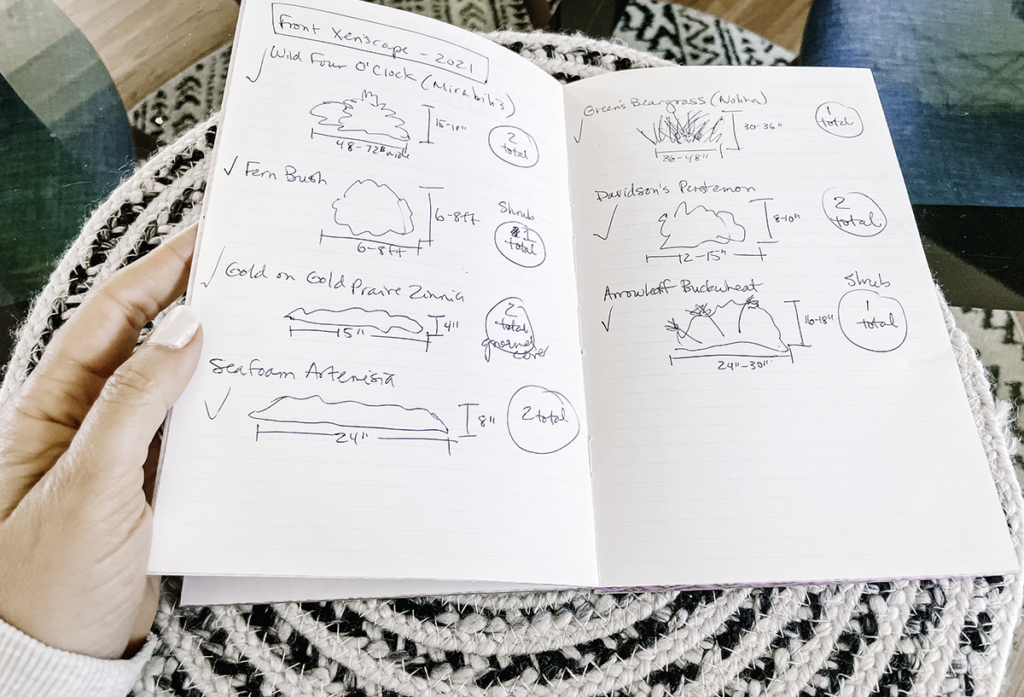
Conclusion
Designing a layout for your vegetable garden and carefully considering plant placement may take some time and effort, but it’s well worth it in the end. By carefully planning out your garden, you can help ensure that every vegetable gets the proper amount of sunlight, water, and nutrients it needs to grow and thrive. So, take the time to plan out your garden this season, and enjoy the many benefits of growing your own fresh produce!


